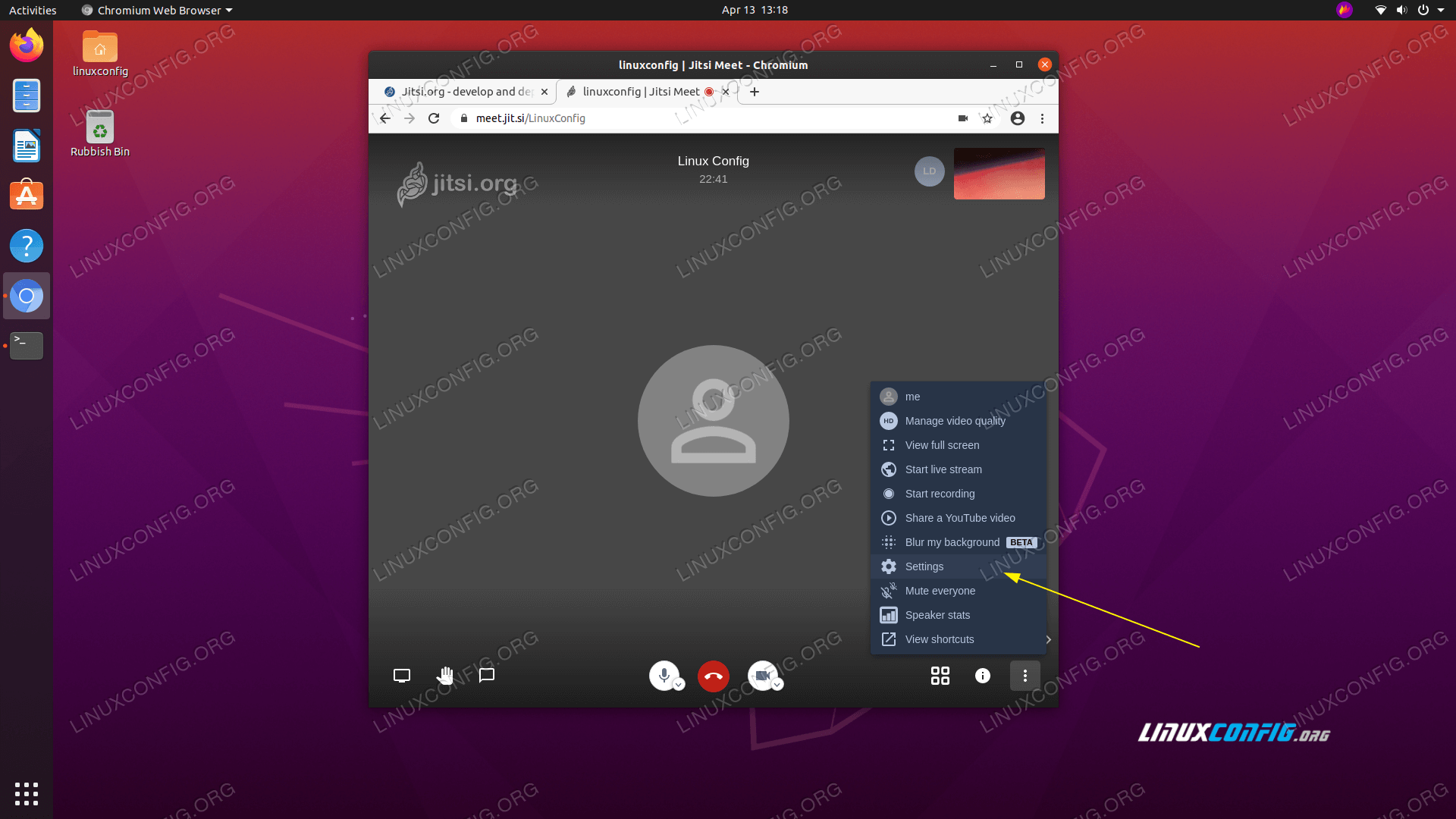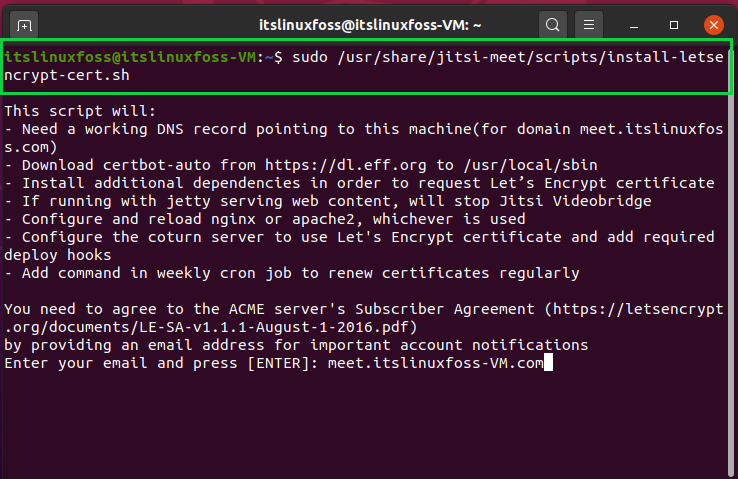

- #Install jitsi meet ubuntu 20.04 how to#
- #Install jitsi meet ubuntu 20.04 install#
- #Install jitsi meet ubuntu 20.04 software#
- #Install jitsi meet ubuntu 20.04 Offline#
I'm going to use the subdomain because the Jitsi Meet video conferencing system described here will be used for the Mauritius Software Craftsmanship Community (MSCC) and associated user groups in Mauritius. That domain will be used to access your Jitsi Meet server over the internet. Prerequisites: Domain Nameīefore you start following the steps in this article you should consider to have a fully qualified domain name (FQDN) at hand. Surely, the necessary steps shall be reproducible on other cloud computing platforms like Microsoft Azure or Amazon AWS. This first article describes the fundamental installation of Jitsi Meet on the Google Cloud Platform.
#Install jitsi meet ubuntu 20.04 how to#
The result is a series of tutorials on how to get started with Jitsi Meet, how to customise it for your own branding, and how to enable more features beyond the basic installation.

Inspired by the announcement that offers free access to host video conferencing calls locally in Mauritius and the fact that past few meetings of the MSCC had been conducted virtually using Google Hangouts Meet, I reserved some time to do a little research.
#Install jitsi meet ubuntu 20.04 Offline#
Due to a lack of necessity and organising most community meetings offline - both MSCC and GDG Mauritius - there was no motivation to look closer into any video conferencing platform. Then you add the directive anonymousdomain into your hosts object.Irrespective of the current situation I already had a look at the Jitsi Meet platform some time back last year. nano /etc/jitsi/meet/$(hostname -f)-config.js Add guest domain to Jitsi Meet frontendĪfter adding the guest domain to the XMPP server component, you need to add this VirtualHost to the configuration object in the web frontend. The outcome is now that the primary VirtualHost of your Jitsi instance would require any kind of authentication to create a conference meeting room whereas the VirtualHost for guests still grants access to anonymous users.

It does not require any DNS record or SSL certificate. Note: The domain of the guest VirtualHost is internal only. Save the file to confirm the modifications.

enabled = false - Remove this line to enable this hostĪdditionally, you add a new virtual host definition at the end of the same file. Here you change the current value of authentication from anonymous to internal_hashed like so. nano /etc/prosody/conf.d/$(hostname -f).cfg.lua Open the configuration file of your domain with your preferred text editor. The central component of Jitsi Meet is the Prosody XMPP server which is responsible for user management among other tasks, like authentication. After the room is created others will still be able to join from an anonymous domain. Whenever a new room is about to be created Jitsi Meet will prompt for user name and password. It is possible to allow only authenticated users for creating new conference rooms. Let's have a look at the architecture of Jitsi Meet to get a better understanding. Securing your instance of Jitsi Meet requires three configuration changes plus the creation of user accounts with permission to host conference calls.
#Install jitsi meet ubuntu 20.04 install#
Please read Install Jitsi Meet on Compute Engine (GCP) in case you have not created your own instance yet. In this second article on Jitsi Meet we are going to enable authentication to avoid any misuse from public users. Meaning, that anyone knowing the URL of your server can create a new meeting room and start to have video conferences using your instance and probably causing additional cost. However such a default installation of Jitsi Meet is open. Most important information is a fully qualified domain name (FQDN), and that's it. There are hardly any configuration changes necessary. A basic installation of Jitsi Meet gets you up and running within shortest time, probably in less than 15 minutes.


 0 kommentar(er)
0 kommentar(er)
